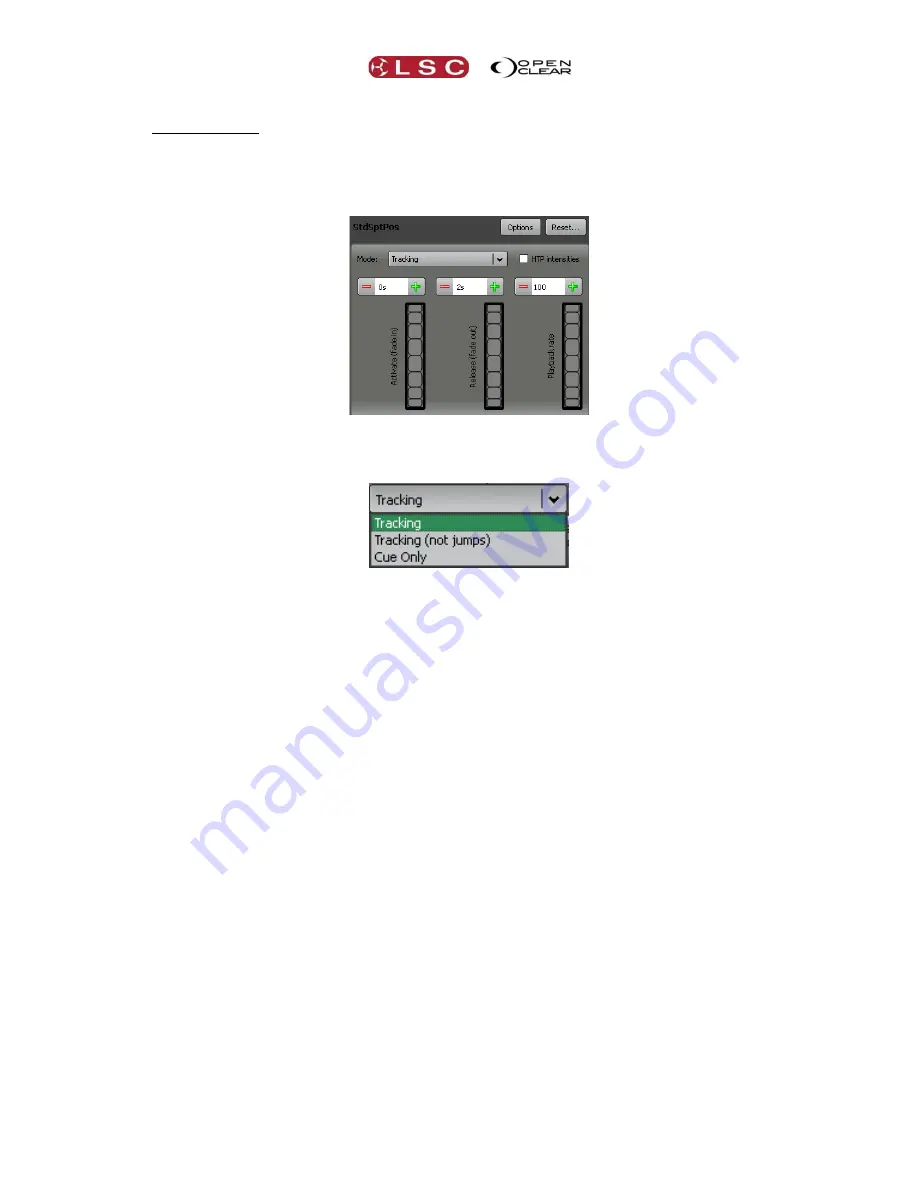
Clarity
Control Booth
Operator Manual
Page 151
Hint: The current settings that you choose for a cue-list can be used as the defaults for
all new cue-lists by right clicking on a cue-list and select
ing “
Use Current options as
default”.
24.2.1
Cue-list Playback Options
These options affect the way a cue-list will playback.
Clicking the Mode drop down box allows you to select the way that the information in the
incoming cue is applied:
Tracking
. (Default setting). When a cue is played back, the attribute values in the cue
are applied to the output. Any attribute information from previous cues that has not
been updated by the new cue is retained on the output. Therefore, the cue-list will track
unchanged information from previous cues to the current cue until overridden by a new
value.
For example:
Cue 1 = fixtures 1 & 2 to 100%
Cue 2 = fixture 1 to 50%.
When cue 2 is played back, fixture 2 stays at 100% because it has no new value in cue 2.
Fixture 2 levels have tracked through.
A random
jump
in Tracking mode from one cue to a later cue will collect all the intervening
value changes so that the destination cues exact state is achieved as if the playback had
stepped through all cues up to that point.
For example: Jumping over (missing) a cue that changes colour will still get the colour change
at the completion of the jump.
Tracking
(Not jumps)
. Tracking applies as above, but if you jump out of order to a
later cue in the list, then the values in the jumped cues are NOT tracked forward to the
current cue.
For example:
Cue 1 = intensity to 100%.
Cue 2 = colour to green.
Cue 3 = intensity to 50%.
If you play cue 1 then jump to cue 3, you do not collect the values in cue 2. That is, the lights
don’t go green.
Cue Only
. The entire cue-list does not track. The next cue replaces the previous cue.
When a cue is played back, its recorded attribute values are applied to the output and
any attributes from the previous cue that are not present in the current cue will be
released from the playback.
For example:






























